
Here & Now
The Academy of Urbanism Journal

Essential Urban Design: A handbook for Architects, designers and planners
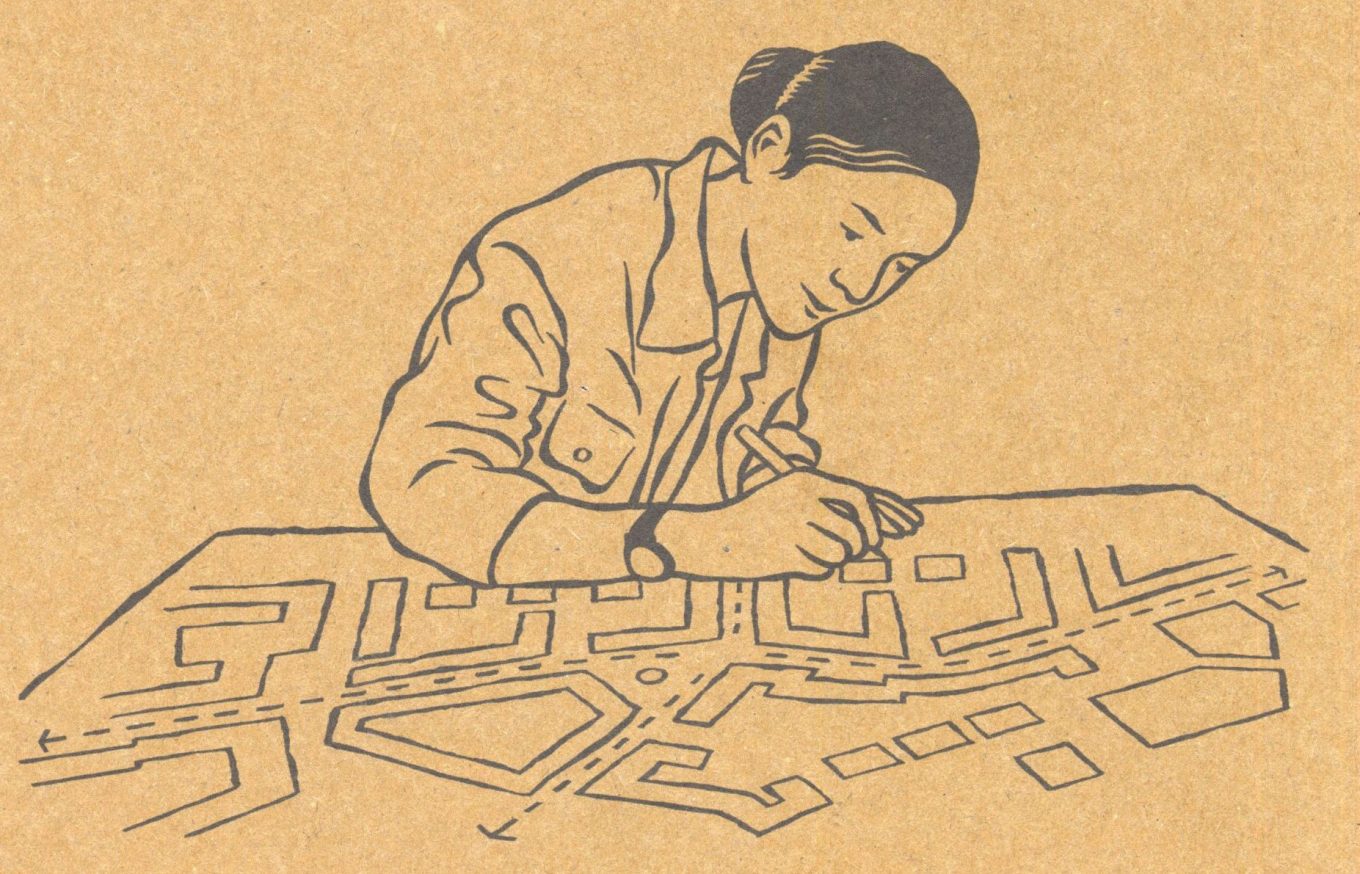
David Rudlin reviews Rob Cowan’s new book that sets out to create, in words and distinctive hand drawings by himself and others, the definitive text on urban design.
The inside front cover of this book includes 56 portraits of the key figures in the development of urban design from Vitruvius via Unwin, Howard, Geddes and Jacobs to Hillier, Alexander and Farrell. You will be pleased to hear that John Thompson is there along with academicians Jennifer Keesmaat, John Worthington, Canny Ash and the late Ben Hamilton Bailey. I blush to say that there is even a picture of me!
Rob Cowan starts by saying that there are two things wrong with the term Urban design. ‘Urban’ gives the false impression that it applies only to urban areas, and ‘design’ suggests that it is the same as what architects do just on a bigger scale. However despite a brief dalliance with the term ‘placemaking’ we haven’t come up with anything better and so urban design will just have to do.
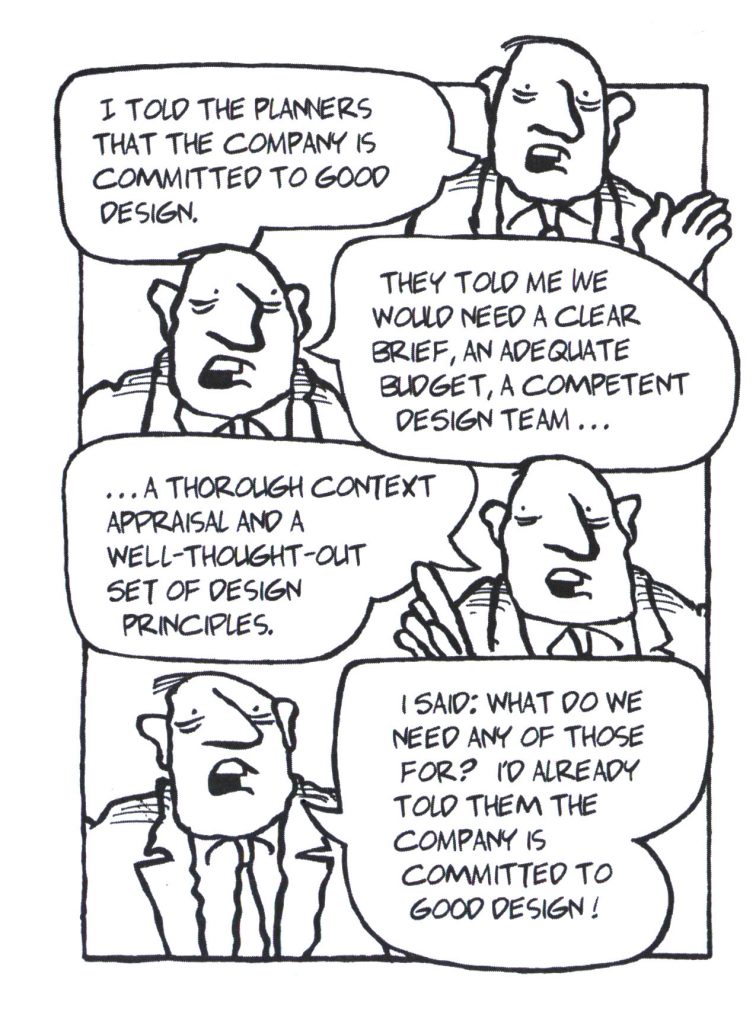
The first part of the book charts the history of urban design thinking and practice through the individuals who have shaped it. Much of this is familiar territory but it will serve as a tremendous primer for those interested in the subject. There were bits that were new to me like the 1953 government guidance Design in Town and Village written by Thomas Sharp, Frederick Gibbert and William Holford with an introduction by Harold MacMillan. Believe it or not, this was the last government guidance on urban design until the 2000 publication of By Design where Rob’s history of urban design ends.
There is also a history of urban design institutions from early attempts by the RIBA to claim the field, to the emergence of the RTPI with a strong civic design antecedence. Then as planners ceded the territory, other groups emerged starting with the Urban Design Group in 1978, The Urban Design Alliance in 1997, CABE in 1999, the AoU in 2006 and the Place Alliance in 2014. Rob largely approves of urban design’s reluctance to become a profession but, concludes by saying that the urban design movement has ‘been made less effective by being distributed over a number of organisations, competing with each other… for members and profile’.
Part 2 of the book sets out eight design objectives and covers similar ground to other urban design guidance from Responsive Environments onwards albeit framed in different terms: 1) A mix of uses, 2) Fit for purpose, 3) Adaptability and resilience to change, 4) Well-used spaces, 5) Accessible and navigable, 6) Biodiverse, 7) Efficient use of resources and 8) Beautiful and interesting. Yes the word Beauty is in there at number 8!
The following section goes on to show how all of these objective relate to the overriding importance a scheme’s context and goes on to use the 8 criteria to assess three real-life schemes, Bloomberg London, McGrath Road housing by Peter Barber and Upton in Northampton. While Cowan doesn’t spare these schemes, he recognises that they are at least places where an effort has been made.
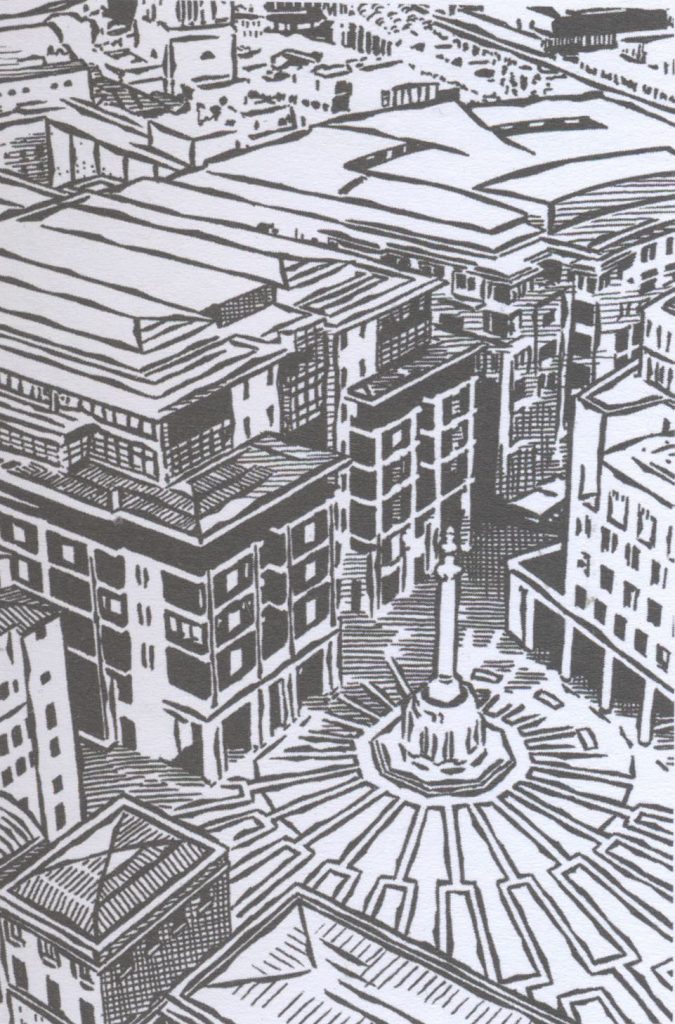
In the next section he describes the workings of the UK planning system and how it relates to urban design. He shows how the local plan allocation process generally identifies the wrong sites and how Roger Evans set out a better way. There is talk of local plans, design codes, planning applications and design review. An excellent description of how our system works rather than a biting critique.
The final part of the book talks about the process of masterplanning and I should once more declare an interest because URBED’s work is well featured. There is a review of strategic urban design, some of the key concepts, masterplans, design coding, radical incrementalism, density and movement. If a student wanted one place to understand how to create a masterplan they could do worse that start here.
It is likely that members of the Academy will be aware of much of what is in this book but it still needs to be on your bookshelf. At times it reads a bit like Rob’s excellent Dictionary of Urbanism which I’m sure you already have. It explains ideas and concepts with great clarity and many architects and planner will find it hugely helpful even if the book isn’t a place where you will find a critical examination of urban design and the failings of our planning system. However the combination of words and hand drawings is part of a great tradition from Lynch and Cullen through Tibbalds and Responsive Environments. These are the books that turned me on to urban design Rob’s splendid book will hopefully do the same for a new generation of urban designers.
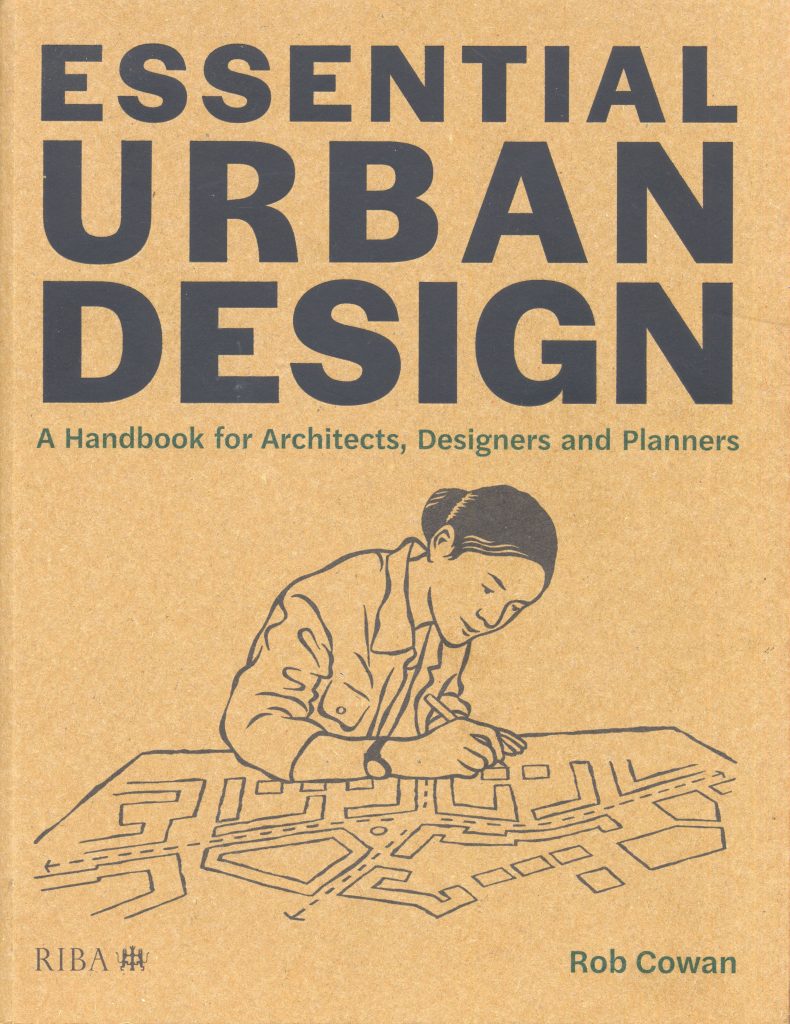
Related Posts

Here & Now e-journal – Spring 2024 – Housing: The Alternatives

Life, Cycle, Analysis

Here & Now e-journal – Winter 2024

Begin typing your search above and press return to search. Press Esc to cancel.
Privacy Overview
| Cookie | Duration | Description |
|---|---|---|
| cookielawinfo-checkbox-analytics | 11 months | This cookie is set by GDPR Cookie Consent plugin. The cookie is used to store the user consent for the cookies in the category "Analytics". |
| cookielawinfo-checkbox-functional | 11 months | The cookie is set by GDPR cookie consent to record the user consent for the cookies in the category "Functional". |
| cookielawinfo-checkbox-necessary | 11 months | This cookie is set by GDPR Cookie Consent plugin. The cookies is used to store the user consent for the cookies in the category "Necessary". |
| cookielawinfo-checkbox-others | 11 months | This cookie is set by GDPR Cookie Consent plugin. The cookie is used to store the user consent for the cookies in the category "Other. |
| cookielawinfo-checkbox-performance | 11 months | This cookie is set by GDPR Cookie Consent plugin. The cookie is used to store the user consent for the cookies in the category "Performance". |
| viewed_cookie_policy | 11 months | The cookie is set by the GDPR Cookie Consent plugin and is used to store whether or not user has consented to the use of cookies. It does not store any personal data. |

Urban Design for an Urban Century | Book Review
Book review of Urban Design for an Urban Century: Shaping More Livable, Equitable and Resilient Cities , Lance Jay Brown. “Urban Design for an Urban Century” tells us the story of urban design. This book describes not only how the profession came to be, but offers insights into how it has developed and how it is continuing to change and create the cities of the future. The book is perhaps best described as an in-depth summary of the field of urban design. It’s a resource that sheds light on an often misunderstood field of design. Jam-packed with great information, the book focuses on giving readers an understanding of the impact urban design has on the past, present, and future of cities.
Urban Design for an Urban Century
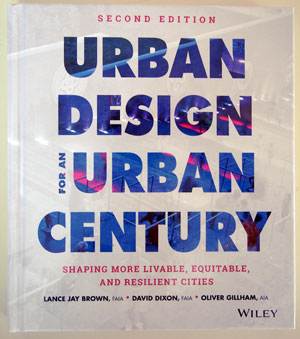
Front cover of Urban Design for an Urban Century. Photo credit: Michelle Biggs
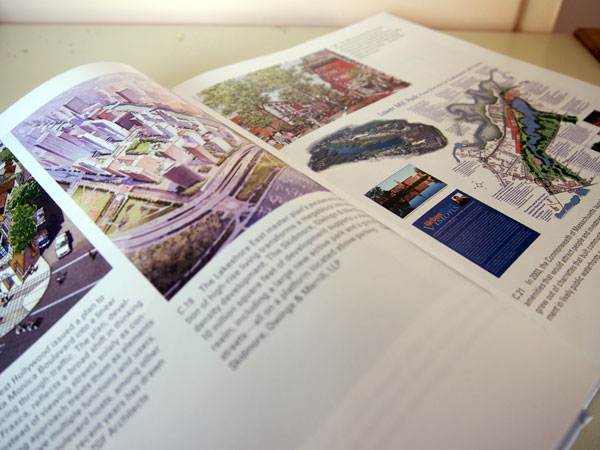
Inside Urban Design for an Urban Century. Photo credit: Michelle Biggs

- Landscape and Urban Design for Health and Well-Being
- Digital Drawing for Landscape Architecture
- 10 Books to Read in Your Fourth Year of Landscape Architecture
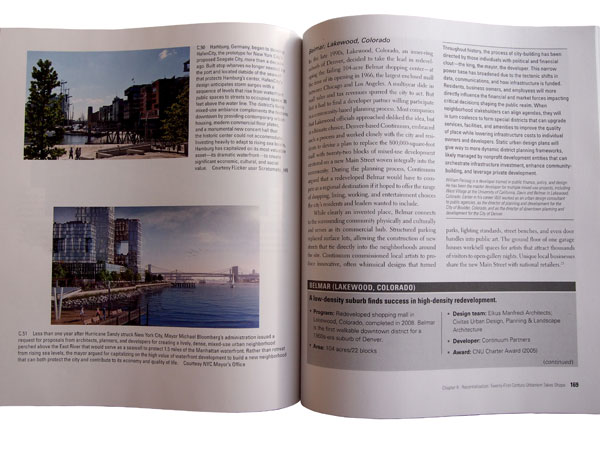
Pick up your copy of Urban Design for an Urban Century: Shaping More Livable, Equitable and Resilient Cities
Review by Michelle Biggs Return to Homepage
Related Articles
Atelier dreiseitl opens firm in portland.
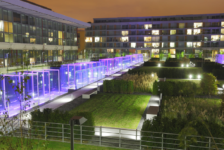
Highbury Square: From Stadium to Apartments
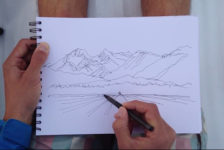
Hand Drawing Tutorial: How to Draw Faster
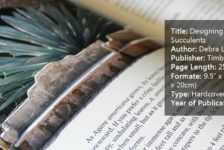
Designing With Succulents | Book Review

Three Things to Consider When Purchasing a Garden Shed

Green Walls: The Essential Guide

How a Competition Project Brought Back Old Values

A Welcome Profusion: Social Justice Discussion and Action

Gardenia Fair – The Spring Fair
Leave a reply cancel reply.
You must be logged in to post a comment.
Lost Password
Forgot your password?
In order to pass the CAPTCHA please enable JavaScript
Remember Me
No account? Sign up
Please enter your username or email address. You will receive a link to create a new password via email.
Already have an account? Login instead

Urban Planning
Open access journal, issn: 2183-7635.
Check out our latest project

- Other Journals
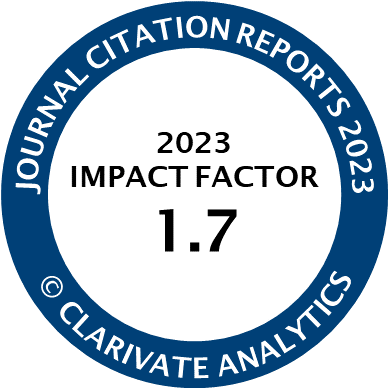
SCImago Journal & Country Rank
A Review of The Routledge Handbook of Urban Design Research Methods
- Aminreza Iranmanesh Faculty of Architecture and Fine Arts, Final International University, Turkey
| Views: | 774 --> | | | Downloads: | 904 --> |
© Aminreza Iranmanesh. This is an open access article distributed under the terms of the Creative Commons Attribution 4.0 license (http://creativecommons.org/licenses/by/4.0), which permits any use, distribution, and reproduction of the work without further permission provided the original author(s) and source are credited.
© Cogitatio Press (Lisbon, Portugal) unless otherwise stated | Privacy Policy | Homepage
- booksellers
- interviews, essays, etc.

- 180 Designers
- 34 Commentators
- 76 Guest Contributors
- 25 Book Board Members
- Design Matters: On Books

- 2,000 Chosen Books
- Books by Contributors
- Notable Design Books of 2013
- Notable Design Books of 2012
- Notable Design Books of 2011
- Current Reading by Contributors
- Book of the Week

- 50 Books / 50 Covers
- Archives & Libraries
- Book List of the Week
- Cover Stories
- Daily Features
- Design Books to Win
- Designers & Books News
- Kickstarter Projects
- Notable Design Books: Reviews
- Quote of the Day
- Reviews & Recommendations
- Themed Book Lists
- Weekly Wrap-Up & Preview

- Books Most Frequently Chosen
- List of Lists
Community Book Lists
- Featured & Noteworthy Publishers
- Featured & Noteworthy Booksellers
- Forthcoming Books
- Recently Published Books
- Backlist Books
- Designers & Books Fair 2015
- Designers & Books Fair 2012
- Online Book Fair
15 Books on Urban Design
From jane jacobs to jaime lerner.

Here are 15 books on urban design and planning from our contributors. We’ll be giving away copies of one of these books in a drawing opening this Wednesday, October 8 . Be sure to check back!

From the Publisher . American urban form—the spaces, places, and boundaries that define city life—has been evolving since the first settlements of colonial days. The changing patterns of houses, buildings, streets, parks, pipes and wires, wharves, railroads, highways, and airports reflect changing patterns of the social, political, and economic processes that shape the city. In this book, Sam Bass Warner and Andrew Whittemore map more than three hundred years of the American city through the evolution of urban form. They do this by offering an illustrated history of “the City”—a hypothetical city that exemplifies the American city’s transformation from village to merchant seaport, industrial city, multicentered metropolis, and, finally, regional metropolis that participates in both the local and the global. The book thereby offers a yardstick against which readers can measure the history of their city.
Warner and Whittemore have constructed their hypothetical City from the histories of Boston, Philadelphia, and New York, focusing on commonalities that make up key patterns in American urban development. In an engaging text accompanied by Whittemore’s detailed, meticulous drawings, they chart the City’s changing boundaries, densities, building styles, transportation infrastructures, and population patterns. Planning for the future of cities, they remind us, requires an understanding of the forces that shaped the city’s past; these are the tools of urban change. The city’s protean, ever-changing nature offers each generation a fresh chance to reform (and re-form) it.

From the Publisher. Compendium of the schemes and dreams that hundreds of New Yorkers and designers around the world shared in the lead-up to the first-ever Urban Design Week, sponsored by the Institute for Urban Design (IFUD) in September 2011. The Atlas is the inaugural title of a new IFUD imprint, Multi-Story Books.
Available for purchase from the Institute of Urban Design .

From Morphosis . For the past 40 years Thom Mayne and his firm, Morphosis, have been engaged with projects that exist in the hybrid space between architecture and urban planning. Against this backdrop, Combinatory Urbanism: The Complex Behavior of Collective Form surveys 12 urban projects that range in scale from a 16-acre proposal for rebuilding the World Trade Center site after the 2001 terrorist attacks to a 52 thousand-acre redevelopment proposal for post-Katrina New Orleans. This book and the proposals found within, posit an alternative to traditional end-state planning solutions, while attempting to not only illuminate but also explicate Mayne’s own work and critical processes. Combinatory Urbanism represents a departure from previous Morphosis publications. Both a manifesto on urbanism and a comprehensive presentation of Morphosis urban design projects, many of which have never before been published; this book fills a void in the world of architectural and urban design publications. Foreword by Stan Allen.
Available from Stray Dog Cafe .

From the Publisher . In A Country of Cities , author Vishaan Chakrabarti argues that well-designed cities are the key to solving America's great national challenges: environmental degradation, unsustainable consumption, economic stagnation, rising public health costs and decreased social mobility. If we develop them wisely in the future, our cities can be the force leading us into a new era of progressive and prosperous stewardship of our nation. In compelling chapters, Chakrabarti brings us a wealth of information about cities, suburbs and exurbs, looking at how they developed across the 50 states and their roles in prosperity and globalization, sustainability and resilience, and heath and joy. Counter to what you might think, American cities today are growing faster than their suburban counterparts for the first time since the 1920s. If we can intelligently increase the density of our cities as they grow and build the transit systems, schools, parks and other infrastructure to support them, Chakrabarti shows us how both job opportunities and an improved, sustainable environment are truly within our means. In this call for an urban America, he illustrates his argument with numerous infographics illustrating provocative statistics on issues as disparate as rising childhood obesity rates, ever-lengthening automobile commutes and government subsidies that favor highways over mass transit. The book closes with an eloquent manifesto that rallies us to build "a Country of Cities," to turn a country of highways, houses and hedges into a country of trains, towers and trees.

From the Publisher . Published to coincide with the 50th anniversary of its initial publication, this special edition of Jane Jacobs’s masterpiece, The Death and Life of Great American Cities , features a new Introduction by Jason Epstein, the book’s original editor, who provides an intimate perspective on Jacobs herself and unique insights into the creation and lasting influence of this classic.
The Death and Life of Great American Cities was described by the New York Times as “perhaps the most influential single work in the history of town planning. . . . [It] can also be seen in a much larger context. It is first of all a work of literature; the descriptions of street life as a kind of ballet and the bitingly satiric account of traditional planning theory can still be read for pleasure even by those who long ago absorbed and appropriated the book’s arguments.” Jane Jacobs, an editor and writer on architecture in New York City in the early sixties, argued that urban diversity and vitality were being destroyed by powerful architects and city planners.
Also see The Death and Life of Great American Cities (original edition).

From the Publisher . This investigation of the private towns of Silicon Valley examines the tech campus as a typology and attempts to discover what urban design says about companies we think we know.

From the Publisher . While climate change, sustainable architecture, and green technologies have become increasingly topical, issues surrounding the sustainability of the city are much less developed. The premise of the book is that an ecological approach is urgently needed both as a remedial device for the contemporary city and an organizing principle for new cities. “Ecological Urbanism” approaches the city without any one set of instruments and with a worldview that is fluid in scale and disciplinary approach. Design provides the synthetic key to connect ecology with an urbanism that is not in contradiction with its environment. The book brings together design practitioners and theorists, economists, engineers, artists, policy makers, environmental scientists, and public health specialists, with the goal of reaching a more robust understanding of ecological urbanism and what it might be in the future. With contributions by Homi Bhabha, Stefano Boeri, Chuck Hoberman, Rem Koolhaas, Sanford Kwinter, Bruno Latour, Nina-Marie Lister, Mohsen Mostafavi, Matthias Schuler, Sissel Tolaas, and Charles Waldheim, among others.

From the Publisher . What is it that gives places their individual qualities and defines the life of a city? Architects and urbanists are accustomed to describing and creating the organizational structures, the layouts and physical attributes of our cities. But what are the relations between the design of a city—its form—and the life engendered by that form? Responding to this question is the inspiration for In the Life of Cities . Contributors from a wide range of fields address the role and life of cities as diverse as Baku, Buenos Aires, Cairo, Detroit, Jakarta, Johannesburg, Mumbai, Paris, Quito, St. Petersburg, Tel Aviv, Tirana, and Toronto. Portfolios of contemporary photography present the layered realities of urban life today.
With contributions by Arjun Appadurai, Eve Blau, Svetlana Boym, Lindsay Bremner, Jana Cephas, Felipe Correa, Rahul Mehrotra, Mohsen Mostafavi, Antoine Picon, Gyan Prakash, Nasser Rabbat, Rafi Segal, Jorge Silvetti, AbdouMaliq Simone, and Charles Waldheim.

From the Publisher . The best cities become an ingrained part of their residents’ identities. Urban design is the key to this process, but all too often, citizens abandon it to professionals, unable to see a way to express what they love and value in their own neighborhoods. In this visually rich book, Alexandros Washburn, Chief Urban Designer of the New York Department of City Planning, redefines urban design. His book empowers urbanites and lays the foundations for a new approach to design that will help cities to prosper in an uncertain future. He asks his readers to consider how cities shape communities, for it is the strength of our communities, he argues, that will determine how we respond to crises like Hurricane Sandy, whose floodwaters he watched from his home in Red Hook, Brooklyn.
Washburn draws heavily on his experience within the New York City planning system while highlighting forward-thinking developments in cities around the world. He grounds his book in the realities of political and financial challenges that hasten or hinder even the most beautiful designs. By discussing projects like the High Line and the Harlem Children’s Zone as well as examples from Seoul to Singapore, he explores the nuances of the urban design process while emphasizing the importance of individuals with the drive to make a difference in their city.
Throughout the book, Washburn shows how a well-designed city can be the most efficient, equitable, safe, and enriching place on earth. The Nature of Urban Design provides a framework for participating in the process of change and will inspire and inform anyone who cares about cities.

From the Publisher . A New Theory of Urban Design provides an entirely new theoretical framework for the discussion of urban problems.

From the Publisher . Sourcebook of Contemporary Urban Design presents more than 300 noteworthy case studies in its 600 pages, the first large-scale book of its kind to showcase a complete and diverse range of structures worldwide. The case studies incorporate many types of urban space projects, indoor and outdoor, making this lushly illustrated, information-rich book an invaluable resource that architects and architectural students will turn to again and again.
Each case study includes a succinct description of the project at hand, listing its name, client, and location and presenting its unique objectives, challenges, and solutions. Every case study also features numerous full-color photographs and detailed renderings of site and floor plans. Finally, each case study provides a full listing of those involved in the project: the design firm and its participating architects, engineers, consultants, and contractors.

From the Publishe r . Amid the cultural and political ferment of 1960s France, a group of avant-garde architects, artists, writers, theorists, and critics known as “spatial urbanists” envisioned a series of urban utopias—phantom cities of a possible future. The utopian “spatial” city most often took the form of a massive grid or mesh suspended above the ground, all of its parts (and inhabitants) circulating in a smooth, synchronous rhythm, its streets and buildings constituting a gigantic work of plastic art or interactive machine. In this new urban world, technology and automation were positive forces, providing for material needs as well as time and space for leisure.
In this first study of the French avant-garde tendency known as spatial urbanism, Larry Busbea analyzes projects by artists and architects (including the most famous spatial practitioner, Yona Friedman) and explores texts (many of which have never before been translated from the French) by Michel Ragon, the influential founder of the Groupe International d’Architecture Prospective (GIAP), Victor Vasarely, and others.
Even at its most fanciful, Busbea argues, the French urban utopia provided an image for social transformations that were only beginning to be described by cultural theorists and sociologists.

From the Publisher . During his three terms as mayor of Curitiba, Brazil in the 1970s and ’80s, architect and urbanist Jaime Lerner transformed his city into a global model of the sustainable and livable community. From the pioneering Bus Rapid Transit system to parks designed to catch runoff and reduce flooding and the creation of pedestrian-only zones, Lerner has been the driving force behind a host of innovative urban projects. In more than 40 years of work in cities around the globe, Lerner has found that changes to a community don’t need to be large-scale and expensive to have a transformative impact—in fact, one block, park, or a single person can have an outsized effect on life in the surrounding city.
In Urban Acupuncture , Lerner celebrates these “pinpricks” of urbanism—projects, people, and initiatives from around the world that ripple through their communities to uplift city life. With meditative and descriptive prose, Lerner brings readers around the world to streets and neighborhoods where urban acupuncture has been practiced best, from the bustling La Boqueria market in Barcelona to the revitalization of the Cheonggyecheon River in Seoul, South Korea. Through this journey, Lerner invites us to re-examine the true building blocks of vibrant communities—the tree-lined avenues, night vendors, and songs and traditions that connect us to our cities and to one another.
Urban Acupuncture is the first of Jaime Lerner’s visionary work to be published in English. It is a love letter to the elements that make a street hum with life or a neighborhood feel like home, penned by one of the world’s most successful advocates for sustainable and livable urbanism.

From the Publisher . Urban Design Since 1945: A Global Perspective reviews the emergence of urban design as a global phenomenon. The book opens with the urgent need to rebuild cities and re-house the millions of refugees living in camps and shantytowns at the end of the Second World War. Against this background, the book traces the collapse of the modernist, comprehensive state-planning schemes on both sides of the Iron Curtain as global corporations emerged, concentrating on networks and enclaves. It describes how Latin America and then Asia began a rapid urbanization process, shifting the global urban center away from Europe and overturning existing urban design models. This resulted in global megacities of an unprecedented scale, often with large associated shantytowns.
By outlining the dominant models in urban design over the last sixty years—the metropolis, the megalopolis, the fragmented metropolis, and the global megacity—the book provides an essential framework for students of the subject.

From the Publisher . This book offers a comprehensive introduction to urban design, from a historical overview and basic principles to practical design concepts and strategies. It discusses the demographic, environmental, economic, and social issues that influence the decision-making and implementation processes of urban design. The Second Edition has been fully revised to include thorough coverage of sustainability issues and to integrate new case studies into the core concepts discussed. Ancillary materials, including PowerPoint slides, sample questions and projects, and bonus case studies, help to enrich understanding of this topic.

You Might Also Like

Announcements
Now is Better by Stefan Sagmeister
Now is Better
By Stefan Sagmeister Publisher: Phaidon Press Published: October 2023
Combining art, design, history, and quantitative analysis, transforms data sets into stunning artworks that underscore his positive view of human progress, inspiring us to think about the future with much-needed hope.

Design Emergency: Building a Better Future by Alice Rawsthorn and Paola Antonelli
Design Emergency: Building a Better Future
By Alice Rawsthorn and Paola Antonelli Publisher: Phaidon Press Published: May 2022
Rawsthorn and Antonelli tell the stories of the remarkable designers, architects, engineers, artists, scientists, and activists who are at the forefront of positive change worldwide. Focusing on four themes—Technology, Society, Communication, and Ecology—the authors present a unique portrait of how our great creative minds are developing new design solutions to the major challenges of our time, while helping us to benefit from advances in science and technology.
.png)
Why Design Matters: Conversations with the World’s Most Creative People by Debbie Millman
Why Design Matters: Conversations with the World's Most Creative People
By Debbie Millman Publisher: Harper Design Published: February 22, 2022
Debbie Millman—author, educator, brand consultant, and host of the widely successful and award-winning podcast “Design Matters”—showcases dozens of her most exciting interviews, bringing together insights and reflections from today’s leading creative minds from across diverse fields.

Milton Glaser: POP by Steven Heller, Mirko Ilić, and Beth Kleber
Milton Glaser: POP
By Steven Heller, Mirko Ilić, and Beth Kleber Publisher: The Monacelli Press Published: March 2023
This collection of work from graphci design legend Milton Glaser’s Pop period features hundreds of examples of the designer’s work that have not been seen since their original publication, demonstrating the graphic revolution that transformed design and popular culture.
.png)
Meet Me by the Fountain: An Inside History of the Mall by Alexandra Lange
Meet Me by the Fountain: An Inside History of the Mall
By Alexandra Lange Publisher: Bloomsbury Published: June 2022
Chronicles postwar architects’ and merchants’ invention of the shopping mall, revealing how the design of these marketplaces played an integral role in their cultural ascent. Publishers Weekly writes, “Contending that malls answer ‘the basic human need’ of bringing people together, influential design critic Lange advocates for retrofitting abandoned shopping centers into college campuses, senior housing, and ‘ethnocentric marketplaces’ catering to immigrant communities. Lucid and well researched, this is an insightful study of an overlooked and undervalued architectural form.”

Die Fläche: Design and Lettering of the Vienna Secession, 1902–1911 (Facsimile Edition) by Diane V. Silverthorne, Dan Reynolds, and Megan Brandow-Faller
Die Fläche: Design and Lettering of the Vienna Secession, 1902–1911 (Facsimile Edition)
By Diane V. Silverthorne, Dan Reynolds, and Megan Brandow-Faller Publisher: Letterform Archives Books Published: October 2023
This facsimile edition of Die Fläche , recreates every page of the formative design periodical in full color and at original size, accompanied by essays that contextualize the work, highlighting contributions by pathbreaking women, innovative lettering artists, and key practitioners of the new “surface art,” including Rudolf von Larisch, Alfred Roller, and Wiener Werkstätte founders Koloman Moser and Josef Hoffmann.

Popular Now Week Month
- The Book We Need Now: New from Stefan Sagmeister
- Quote of the Day: Witold Rybczynski & Paradise Planned
- Summer Reading for Design Lovers: The Story of Architecture
- One Book and Why: Design School Dean Frederick Steiner Recommends . . .
- One Book and Why: Graphic Designer Stefan Sagmeister Recommends . . .
- Book List of the Week: Milton Glaser
- Matisse as Book Illustrator and Designer
- Imagining Information: Symbols, Isotype, and Book Design
- “The Notebooks and Drawings of Louis I. Kahn” To Be Reissued in a New Facsimile Edition
- Do We Need a Completely New Approach to Marketing Books?
- The Creative Interviewer: Debbie Millman on Why Design Matters
- A Year in Design Books: Holiday Gift List 2022
- Baseball, Architecture, Time, and Creativity
- Eugene Feldman, Co-Editor, and Co-Designer of The Notebooks and Drawings of Louis I. Kahn
Recent Articles

Browse by Discipline
Add your favorite design books to our community book lists.

Thank you for visiting Designers & Books .
To receive the Designers & Books newsletter and occasional email updates from us, please provide your email address:
Jump to navigation

- Become a Recognised Practitioner
- Events Archive
- URBAN DESIGN Journal
- UDG Directory
- Urban Design Books
- Manuals + Briefings
- Insurance for Urban Designers
- Urban Design Jobs
- Urban Design Courses
- Urban Design as a Career
- Employing an Urban Designer
- Advertise a Vacancy
Designing Sustainable Cities
Aimed at a global readership, this book brings together experiments from five UNESCO Design Cities. The editors based at the Institute of Design and Communication of the University of Applied Sciences in Graz, Austria, justify their selection because they consider these cities to be models of design for the future and for the circular economy.
Inspired by Josef Beuys’ 7,000 Oaks City Forestation Instead of City Administration project in Kassel in 1982, the Breathe Earth Collective in Graz is exploring whether cities of the future can function like forests and become urban oases. In the USA, Paul Draus, a Detroit Design Core partner, is contributing to an inclusive design strategy for Detroit, still suffering from post-industrialisation, by consciously building its wholesale reinvention on the layers of the segregated city’s traumas and conflicts. Similarly, Pauline Cornejo Moreno Valle resorts to collective approaches to fix the conurbation of Mexico City, which she considers a broken city, in the hope of producing new solutions for water, waste, public space, mobility and housing by moving away from top-down private interest-driven development, towards greening the city, multimodal transport and social housing. In both cases the authors recognise that their comprehensive strategic objectives are hard to achieve, and advocate small improvements mobilised by local communities.
The main focus of the book is Istanbul, another fast-growing urban agglomeration, which joined the UNESCO City of Design Network in 2017. The broad range of design issues presented in the three chapters on the city encompass interior design, alternative architecture for an ecologically-driven, socially-engaged Istanbul, as well as more conventional urban design guides for urban planning and design, urban spaces and their components, related to policy and participation.
In conclusion Sylwia Ulicka, who teaches an innovative course on urban design in Puebla in Mexico, revisits our materialist culture in designing for sustainability. She moves from the eco-efficiency paradigm (a sustainable materialist culture and the 3Rs: reduce, reuse and recycle) with the aim of squaring the circle between finite planetary capacity and unlimited economic growth, to ‘quadruple bottom line sustainability’ which appropriates meaning to the materialistic culture. Following Fuad-Luke’s refined model of economic viability of design and its contribution to social equity and the ecological stability of production systems, she presents examples of ‘uncomfortable objects’ developed by her students.
This book is full of design inspirations, but its design could do with revisiting. Its large format lends itself well to illustrations but the monochrome, bleached-out photos in turquoise and pale blue are hardly readable, especially when spread across pages, and the tiny font of the captions and references also in pale colours, are not helpful.

As featured in URBAN DESIGN 158 Spring 2021
Want to read more like this? If you're not already an Urban Design Group member, why don't you consider joining ?


3rd Edition
Public Places Urban Spaces The Dimensions of Urban Design
- Taylor & Francis eBooks (Institutional Purchase) Opens in new tab or window
Description
Public Places Urban Spaces provides a comprehensive overview of the principles, theory and practices of urban design for those new to the subject and for those requiring a clear and systematic guide. In this new edition the book has been extensively revised and restructured. Carmona advances the idea of urban design as a continuous process of shaping places, fashioned in turn by shifting global, local and power contexts. At the heart of the book are eight key dimensions of urban design theory and practice—temporal, perceptual, morphological, visual, social, functional—and two new process dimensions—design governance and place production. This extensively updated and revised third edition is more international in its scope and coverage, incorporating new thinking on technological impact, climate change adaptation, strategies for urban decline, cultural and social diversity, place value, healthy cities and more, all illustrated with nearly 1,000 carefully chosen images. Public Places Urban Spaces is a classic urban design text, and everyone in the field should own a copy.
Table of Contents
Matthew Carmona is Professor of Planning and Urban Design at The Bartlett, University College London (UCL). He is an architect and planner and researches urban design governance, the design and management of public space, and the value of urban design. He Chairs the Place Alliance and blogs at https://matthew-carmona.com.
Critics' Reviews
‘The third and the newest edition of the book is one of the best documentations of urban design discourse, not just because of the sheer volume of the materials covered, but also because it helps to "make sense of the complex overlapping and sometimes confusing urban design literature- Hooman Foroughmand Araabi, Journal of Urban Design
About VitalSource eBooks
VitalSource is a leading provider of eBooks.
- Access your materials anywhere, at anytime.
- Customer preferences like text size, font type, page color and more.
- Take annotations in line as you read.
Multiple eBook Copies
This eBook is already in your shopping cart. If you would like to replace it with a different purchasing option please remove the current eBook option from your cart.
Book Preview

The country you have selected will result in the following:
- Product pricing will be adjusted to match the corresponding currency.
- The title Perception will be removed from your cart because it is not available in this region.
Every product is independently selected by editors. Things you buy through our links may earn Vox Media a commission.
The 9 Best Architecture, Design, and Urbanism Books Out This Spring
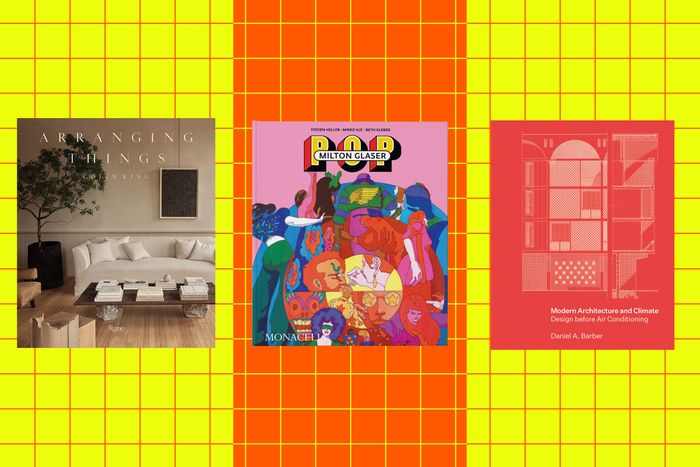
If the desire to redesign our environments — from our streets to our homes — became a full-fledged obsession over the past few years, it’s exciting to consider what might come next. Below are nine new design books out this spring that continue this thread, from monographs of giants in the field, like Milton Glaser and Danish designer Jens Quistgaard, to a survey of early weed ads, to a critical analysis of one of the most consequential yet vexing elements of urban America, parking.
All titles are listed by U.S. publishing date, with the newest releases first.
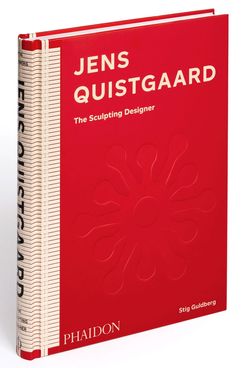
Jens Quistgaard might not be a household name, but his work, namely for the brand Dansk, makes up among the most recognizable Scandinavian-inspired designs in the United States. His reissued Kobenstyle cookware continues to sell well on Food52 , and his teak pepper mills routinely sell for hundreds of dollars on eBay and 1stDibs . Quistgaard was an artist first, driven by the joy of creating things and a love of form, and this new monograph about him, Jens Quistgaard: The Sculpting Designer , offers an encyclopedic look at his body of work, from the animal figurines he made when he was 5 years old to a teak barstool he designed at age 83, along with all of his work for Dansk, of course. The book is a design object in and of itself, with a textured spine inspired by the woven rattan handles he often used on his ceramic teapots and Kobenstyle cookware. — Diana Budds

The work of a stylist is really making art out of relationships — between shapes, textures, materials, and colors — in a way that’s satisfying to see. In just a few years, Colin King has become a stylist who continues to surprise us with his instincts, styling minimalist yet still visually rich interiors for clients like Roman and Williams Guild, Architectural Digest , and Anthropologie. Despite working with big brands, King’s approach is remarkably accessible and sustainable, and his book is a guide to looking at your own belongings with a fresh perspective. — D.B.
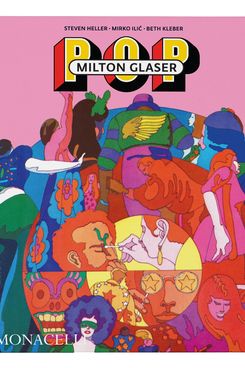
We don’t need to remind anyone on this particular website of the design greatness of Milton Glaser. He co-founded New York Magazine, created and co-wrote the “ Underground Gourmet ” column, and drew the logo at the top of this page as well as another familiar logo with the same initials. His worldview continues to infuse every story we publish, both print and digital. But all the design accolades only begin to touch his work as an illustrator and artist. Starting with Push Pin studios in the early 1950s, he was incredibly prolific, working steadily almost right up to his death two years ago . Book covers, LP jackets, posters, promotional pieces, and labels for canned goods flowed from his multicolored pencils and pens and brushes. (And only pencils and pens and brushes: “My hands have literally never touched a keyboard,” he said late in life.) Milton Glaser: Pop collects hundreds of his illustrated pieces and usefully funnels them into broad categories: “Silhouettes and Shadows,” “Outlines and Strokes,” “Rays and Rainbows.” That structure clarifies that he had a few go-to devices that he relied upon often and consistently, but it also reveals just how much you can do with a basic idea once you get good at it. And Glaser was very, very good at it. — Christopher Bonanos
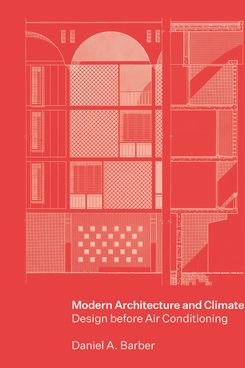
Technology had a profound effect on the architecture of the 20th century. Skyscrapers wouldn’t be possible without elevators, and buildings with massive footprints are only possible because of artificial lighting and mechanical heating and cooling to bring light and air deep into these monoliths. We now know of the tremendous environmental consequences of this type of construction: Buildings account for 40 percent of energy use and a third of greenhouse gas emissions. But not all modernists were so keen on making their architecture machine dependent, as historian Daniel Barber illustrates in his book, which is new in paperback. He examines well-known projects by Le Corbusier, Richard Neutra, and Luis Barragan and movements like Brazilian modernism, surfacing how they responded to climate and environment, and traces how these architects’ interest in making ecologically healthy buildings succumbed to the demands of the heating and cooling industry. It’s a rare opportunity to look closer at modernists’ environmental ethics and not just their aesthetics — and a timely reference for our worsening climate crisis. — D.B.
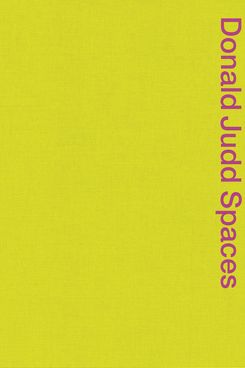
While he’s known for his boxy sculptures, Donald Judd’s true medium was space. He conceived of total environments, meticulously designing furniture, dinnerware, and even the interior of his Land Rover to his exact specifications (and minimalist aesthetic, of course). The way he arranged his spaces was so important to him that one of the requests in his will was to preserve everything in his homes and studios exactly as he left them. These are documented in an expanded edition of Donald Judd Spaces , which includes newly commissioned photographs and archival images of his Soho loft and his buildings and landscapes around Marfa, Texas. — D.B.
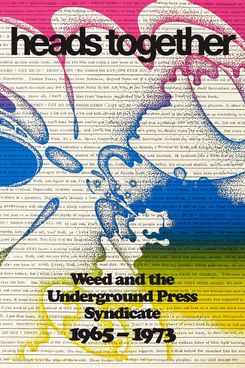
Today’s cannabis rush owes a great debt to the Underground Press Syndicate, a group of radical newspapers that started in the 1960s and took on the legalization of weed as a pet project, among other countercultural concerns. The ads, illustrations, comics, political cartoons, and more that ran in these papers — like the East Village Other, The Los Angeles Free Press , and the Berkeley Barb — were among the first entries into the stonercore art canon. While each paper had its own editorial direction, the same articles about cannabis appeared in multiple publications. Heads Together: Weed and the Underground Press Syndicate, 1965–1973 gathers this ephemera along with essays and oral histories about publishing in the era from Ishmael Reed, John Sinclair, and Marjorie Hines. — D.B.
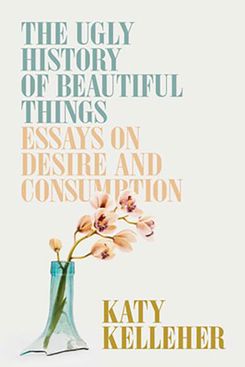
There’s no shortage of status objects in our culture today: rare gemstones, whisper-thin porcelain, and gleaming marble countertops, to name a few. But if you take a step back, you have to wonder why these things command so much desire. How, exactly, did the glandular secretions from a male deer — that would be the musk aroma used in perfumes — become a symbol of luxury? The Ugly History of Beautiful Things looks closer at these compelling objects through deeply fascinating essays that braid together anthropology, art history, psychology, and the author’s personal relationships with aspirational objects. As the book’s title alludes, there’s a sinister backstory to the items Kelleher analyzes — it’s usually some combination of hazardous production methods and environmental degradation — which speaks to an ongoing backlash against consumerism and rapid trend cycles . But it’s not all doom and horror; Kelleher’s message is ultimately a hopeful one: There is plenty of pleasure to be had by honing your eye to see an object of beauty instead of rushing to own it. — D.B.
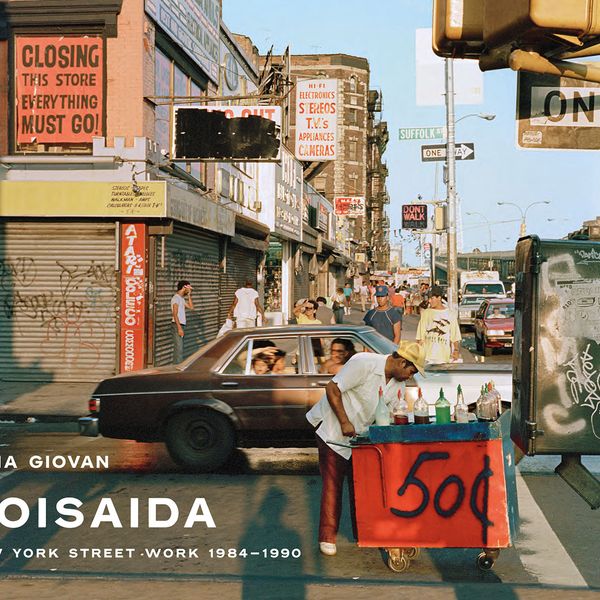
While Tria Giovan lived on the Lower East Side, between 1984 and 1990, she took hundreds of photographs of her neighborhood. But it wasn’t until the pandemic that she actually pulled out her negatives and edited the images. The result is a gorgeous new photo book of the neighborhood from a time before Starbucks, Shake Shack, and million-dollar condos. Giovan’s images of pastel apartment buildings, storefronts with hand-painted signs, and a boxing ring set up in an intersection feel surreal, even idyllic, compared to the gritty photographs that we often see of New York during that time period. — D.B.
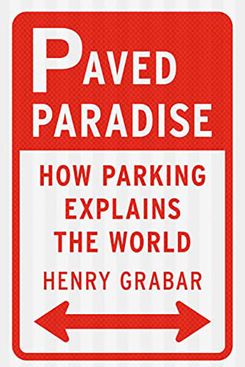
Paved Paradise , by Slate columnist Henry Grabar, investigates a topic that’s somehow simultaneously mundane and radicalizing: our extremely American, almost existential search for a parking spot. Where we can park, for how long, and at what cost explains pretty much everything in our car-dominated society, from the type of housing we build to the way our climate is changing. Grabar serves as a tour guide to the seemingly innocuous policies that entrench parking as a right rather than a service, like free overnight parking (a surprisingly new innovation!) to the utter hopelessness of the municipal math that plops a vast asphalt lot in front of every big-box store. Seeing the country through a “parking rules everything around me” lens is an eye-opening education on how tiny land-use tweaks can engineer true social transformation — and how powerful forces will stop at nothing to prevent those spaces from being used for literally anything other than car storage. — Alissa Walker
- design hunting
- jens quistgaard
- milton glaser
- donald judd
- interior design
- architecture
- weed design
Most Viewed Stories
- Everyone Knew About the A-Team
- Why Are We Still Making Unshaded Playgrounds?
- The Rockaways Chief Lifeguard Who’s Been Rescuing Swimmers for Decades
- The Billionaire vs. the Old Money
- This Week’s Worth-It New York City Apartment Listings
- A Converted Church With 30-Foot Ceilings in Hudson
Editor’s Picks

Most Popular
What is your email.
This email will be used to sign into all New York sites. By submitting your email, you agree to our Terms and Privacy Policy and to receive email correspondence from us.
Sign In To Continue Reading
Create your free account.
Password must be at least 8 characters and contain:
- Lower case letters (a-z)
- Upper case letters (A-Z)
- Numbers (0-9)
- Special Characters (!@#$%^&*)
As part of your account, you’ll receive occasional updates and offers from New York , which you can opt out of anytime.
- Book Review
- Published: 26 March 2007
- Volume 11 , page 213, ( 2006 )
Cite this article

- Adriana Cobo 1
428 Accesses
Explore all metrics
Avoid common mistakes on your manuscript.
Visualizing the Invisible, towards an urban space, Stephen Read and Camilo Pinilla SpaceLab Book Series, Volume 1
This book is a journey through urban projects around the world aiming to offer new intellectual approaches to urbanism as well as a fresh look at its latest physical manifestations. Design approaches in cities including Buenos Aires, Reykjavik, Hamburg, Bogotá, Beijing, Caracas, Seoul, Ubuntu, and Evora are presented through specific urban projects analyzed by a theoretical yet pragmatic reflection.
Visualizing the Invisible stands for an urbanism engaging with daily events on a local scale. The book works on the multiplicity of invisible layers of which the city is composed and examines how they can be used in actively shaping urban form. Proposing urban interaction at many scales, the projects presented in this book share an interest in exploring how to construct a healthy space at the point where the traditional city collides with the contemporary. This takes one back to books like ‘Collage City’, by Koetter and Rowe (1978) , which proposed the collage between the traditional grid of the city and the modern one, as a means to overcome the lack of human scale of projects in modern urban environments, directly confronting the tabula rasa strategy of shaping the new city. In addition, Visualizing the Invisible not only explores the conditions of the existing city as a point of departure, but also includes global interactivity, going as far as including cyborgs. It analyzes how new patterns of communication and mediatic encounters shape our urban life by revealing their power to change urbanism in the future.
The book highlights the question of how local and global phenomena produce a two-way impact on urban form. Although a notion that has attracted numerous urbanists over the last decades, even today this continues to be a viable discourse considering to the ever-increasing need for cities to position themselves on the global map with photogenic mega projects acting as symbols for contemporaneous development and economic growth. Rediscovering the existing local scale as the possible site for the new and the experimental, the projects in this book share not only a convincing simplicity but also even an approachable beauty.
The theoretical texts in the book are very elaborate. For the knowledgeable reader of urban theory, the book offers complex writings on diverse subjects from the dynamics of the Greek Agora to the problems of the virtual in relation to the city. It is also full of references going from Aristotle to Henri Lefebvre, Bruno Latour, and Jane Jacobs. As a theoretical frame for the book's experimental approach, this might be a useful work for academics. For a practitioner, the specifics of the presented projects will be more valuable. Unfortunately, many images are printed at a scale inhibiting access to apparently interesting information.
The projects discussed include a considerable collection of different urban conditions. In Beijing, the area of Shichahai is rapidly changing due to the accelerated growth of cultural tourism focused on the old city's conservation area. Bogotá's Corabastos, a market supply facility constructed in a peripheral location and surrounded by a wall, now faces the pressures of informal urban sprawl. In Seoul, the 1 km Electronic Shopping Mall crossing the district of Seun is being proposed for demolition. The scale and purpose of Caracas' trans-national highway fails to offer any sensible relationship to urban developments of Plaza Venezuela, a central urban area for the city.
With this first volume, the SpaceLab book series has laid the foundation for analyzing these problematic urban conditions by adding an experimental layer to urban environments at the interface of present and future structures.
Rowe, C. and Koetter, F. (1978) Collage City. MIT Press, Cambridge, MA.
Google Scholar
Download references
Author information
Authors and affiliations.
School of Architecture and Construction University of Greenwich,
Adriana Cobo
You can also search for this author in PubMed Google Scholar

Rights and permissions
Reprints and permissions
About this article
Cobo, A. Book Review. Urban Des Int 11 , 213 (2006). https://doi.org/10.1057/palgrave.udi.9000169
Download citation
Published : 26 March 2007
Issue Date : 01 September 2006
DOI : https://doi.org/10.1057/palgrave.udi.9000169
Share this article
Anyone you share the following link with will be able to read this content:
Sorry, a shareable link is not currently available for this article.
Provided by the Springer Nature SharedIt content-sharing initiative
- Find a journal
- Publish with us
- Track your research
Academia.edu no longer supports Internet Explorer.
To browse Academia.edu and the wider internet faster and more securely, please take a few seconds to upgrade your browser .
Enter the email address you signed up with and we'll email you a reset link.
- We're Hiring!
- Help Center

Book Review (Urban Design Process & Image of the city

Simple book review of the favorite Urban Design's references. Urban Design Process written by Hamid Shirvani & Image of the city written by Kevin Lynch.
Related Papers
Bob Giddings
Tridib Banerjee
Hooman Foroughmand Araabi
Sissi Yujing Yang
Raffaele Pernice
Nguyen Mien
Non Arkaraprasertkul
This is a syllabus of an introduction to the discipline of urban design whose goal is to provide students with the necessary skills to participate effectively in urban design studios and will include site, spatial and public domain analysis, map and plan reading, visual, verbal and written communication techniques, and basic computer-based three-dimensional modelling and numerical analysis. Students will be introduced to the objectives and principles of urban design by analysing a number of public spaces including the spaces between buildings as well as the public domain and urban conditions in Sydney.
Olgu Caliskan
The current studio catalogue represents the works of a generation of 'urban designers' taught in the last twenty years at Middle East Technical University (METU), Turkey. Sharing similar values, priorities , expectancies and ideologies with their young colleagues from other parts of the world, they have pursued their creativity in the way that the collective experience would eventually represent a certain period in the disciplinary history of urban design as well. Taken in this way, though it might be considered quite a late attempt, publication of the selected studio works of METU Master of Urban Design Program (METU MUD) at its 20 th anniversary of foundation does actually provide an opportunity to have a holistic view on the general profile of both the programme and the contemporary urban design education from the mid-1990s. By this catalogue commemorating the twenty-year experience of the studio, it is possible to review the changes and continuities in the disciplinary tradition originally established by Baykan Günay and his colleagues. Despite having reflected the general characteristics of its term (within conceptualisation, representation and control), the twenty-year experience of METU MUD reveals its own peculiarities and identity due to the particular interpretation of urban and design within the continuous experimentation at the studio. The term 'experiment', in this sense, is quite a key notion in consideration of the programme. As observed even after a quick look at the works presented by years, one could recognize that in each and every term, there are different concepts, frames and definitions suggested in an implicit search for the new and novel in practice. As the compilation of fifty (individual and/or group) projects introduced by 43 authors, the ex-grad students of the studio, CATALOGUE.01 involves six opening papers reflecting on both the experience of METU MUD in particular and the contemporary urban design education in general. This suggests the readers and researchers of urban design not only a retrospective view on the issue, but also a projective perspective for future.
Loading Preview
Sorry, preview is currently unavailable. You can download the paper by clicking the button above.
RELATED PAPERS
Victoriia Brodskaia
Ruben Martínez
Hadi Sarvari
Landscape and Urban Planning
Department of Architecture and Pacific Urban Studies and Planning Program, University of Hawaii, Honolulu.
Luciano Minerbi
Roosmayri L . Hermaputi
Journal of Urban Research
moureen asaad
Abeer Elshater , Hisham Abusaada
Arlyn Ruslinda
Anirban Adhya
charu kapoor
Town Planning Review
Ali Madanipour
Somya Gupta
Tulu Toros, PhD
Natalia Iachimov
Deeksha Singh
realcorp.at
Altay Çolak
Abeer Elshater
sangeetha ravi
METU Journal of the Faculty of Architecture
Günter Gassner
LIVRE DE LYON
Nihal Arda Akyıldız
Urban Design International
Bulent Batuman
RELATED TOPICS
- We're Hiring!
- Help Center
- Find new research papers in:
- Health Sciences
- Earth Sciences
- Cognitive Science
- Mathematics
- Computer Science
- Academia ©2024
- Articles , Special Edition Articles , Urban theory
Book Review: The Concise Townscape by Gordon Cullen
- July 28, 2023
- No Comments
- book review , EBOOKS , Landscape , Urban Planning , urban planning books
In the realm of urban design and architecture, few works have achieved the status of a true masterpiece. One such exceptional contribution is “The Concise Townscape” by Gordon Cullen. This influential book has made an indelible mark on the field, captivating professionals and enthusiasts alike with its profound insights and visionary ideas. Published in 1961, “The Concise Townscape” revolutionised the In a captivating exploration of urban environments, Cullen delves into the concept of “townscape” and its profound impact on the human experience.
By emphasising the interconnectedness of visual elements, he sheds light on the intricate composition that defines a town. In this comprehensive review, we will explore the key concepts presented in the book, providing valuable insights for professionals and enthusiasts alike. Whether you are a seasoned expert or simply curious about the subject matter, this article will offer a detailed analysis of the book’s content. So, let’s dive in and uncover the essential ideas that make this book a must-read for anyone interested in the topic.
Author's Background
It’s crucial to comprehend the author of the masterpiece before delving further into the book. British architect and urban designer Gordon Cullen , who lived from 1914 to 1994, is renowned for his creative approach to city planning. Cullen committed his life to the study of the advancement of urban environments out of a desire for making cities more habitable and enjoyable. Professionals in the field are continually motivated by his distinctive perspective on townscapes and cities.
The book “The Concise Townscape” provides an in-depth look at the factors that contribute to the distinctive character of life in cities and towns. The writing of Cullen enthrals readers and pulls them into the fascinating world of urban planning and architecture. Let’s get into the fundamental ideas that define this extraordinary piece of work:
Download Editable Resume Templates
Create a stunning professional cv, free editable templates, townscapes and visual perception.
“The Concise Townscape” is built around the idea of “townscape.” According to Cullen, a town is an intricately interwoven visual entity rather than just a group of structures. He encourages readers to think of towns as living things with unique personalities and characteristics. Urban planners and architects may create environments that speak to the human spirit by having a thorough understanding of how people experience and perceive the urban environment through their senses.
Serial Vision:
In “The Concise Townscape,” Gordon Cullen introduces the fascinating idea of “serial vision,” which serves as a key tenet of his townscape philosophy. Serial vision is fundamentally concerned with how people experience and understand the urban environment as they move about it. Visual elements are not presented all at once when individuals go through a town; rather, they appear progressively, exposing themselves as one moves along streets and walkways.
Imagine walking through a town where buildings may appear one by one on the horizon, streets and squares may appear around corners, and public areas may gradually come into view. A sense of suspense and surprise is created as the urban landscape develops, which improves the town’s overall experience. It’s similar to reading a book where each page reveals a new chapter, capturing the reader’s interest and piqueing their curiosity.
Urban planners and architects can carefully orchestrate a town’s visual narrative by comprehending the serial vision concepts. They are able to plan the urban fabric so that certain important features become focal points from particular vantage points, making an effect on both locals and tourists alike. This deliberate arrangement of visual components produces a cogent and enduring urban experience, influencing how people see and remember the city.
Serial vision enhances the urban landscape with a sense of mystery and discovery while also fostering community. The town’s diverse components feel connected when the aesthetic pieces are skillfully put together, creating a seamless whole. The town becomes more significant and relatable to its citizens as a result of this coherent experience, which strengthens a sense of place and identity.
Imagine exploring a town where the streets take you to charming squares, each with its own personality and charm. Every corner you turn reveals buildings with fascinating architectural features that beckon you to investigate more. The way the town’s visual components develop makes you feel connected and as though you are a part of a dynamic narrative within the urban fabric.
Visual Delight and Civic Pride:
Strategic placement of well-designed public areas and landmarks within the urban fabric improves the town’s visual appeal as well as its practical elements. The lives of those who reside in the town are enriched by the town’s beautifully designed parks, colourful squares, and prominent monuments that serve as meeting places and centres for social interaction. Such areas serve as the focal points for neighbourhood gatherings, cultural activities, and a range of recreational pursuits, promoting a sense of community and enhancing the town’s distinct identity.
When locals are proud of their community, they are more willing to contribute to its growth and upkeep. This increased sense of ownership frequently results in a group effort to preserve and safeguard the town’s historical buildings and scenic surroundings. Consequently, well-maintained, cleaner, and more environmentally friendly municipalities are more common.
Additionally, a town’s aesthetic appeal draws visitors and tourists, creating business opportunities and employment options for the neighbourhood. Local businesses can grow and the town’s prosperity can be attributed to its favourable reputation as a desirable vacation spot.
The Image of the Town:
Cullen emphasises how important architecture and urban design have been in creating this perception of the town. The planned placement of the town’s structures, streets, gathering places, and monuments all contribute to its visual story. When these components work together harmoniously, they produce an enduring and real feeling of place that resonates with its inhabitants.
The perception that people have of a town affects both how locals and visitors interact with their surroundings. When someone encounters a town for the first time, a well-crafted town picture can arouse their curiosity and feeling of amazement. This attractiveness can turn a community into a popular tourism attraction, luring both visitors and new residents.
Designers who are aware of the importance of a town’s reputation are better equipped to build enduring structures. They are able to skillfully meld traditional aspects with new ones, maintaining the town’s identity while meeting contemporary demands. Depending on the town’s distinct character and objectives, designers might invoke a nostalgic charm or an innovative spirit by utilising the possibilities of the town’s image.
Additionally, a deliberate effort to improve the town’s image fosters a strong sense of loyalty and pride among its citizens. People who appreciate their hometown’s uniqueness and beauty become its natural champions, promoting its preservation and valuing its past. This pride strengthens the community’s link and dedication to the well-being of the town by fostering a sense of belonging and solidarity.
Path and Place:
Cullen explores the concepts of “path” and “place” in urban design. Paths represent the routes people take through a town, while places are the areas where individuals pause, interact, and form memories. A thoughtful balance between the design of paths and places is essential for creating vibrant and functional urban spaces that cater to human needs and encourage social interactions.
The streets of a town’s paths are like the veins that supply it with vitality. They serve as a representation of the paths that people follow to get from one place to another. Designing thoughtful paths takes accessibility, connectivity, and efficiency into account. The town can be readily navigated and accessible to everybody, including pedestrians and bikers, thanks to well-designed walkways that may produce a smooth flow of movement.
The places in a town, on the other hand, are like the soul that give it personality and sense of identity. These are the places where people stop, congregate, and converse. Places that act as social hubs and promote a sense of community and belonging include public squares, parks, plazas, and community centres. Places should be designed with comfort, beauty, and usefulness in mind to entice visitors to stay awhile, interact, and make memories.
Creating dynamic and useful urban spaces that meet human needs requires striking a fine balance between paths and locations. Towns that feel disorganised and lack venues for social interaction may be the result of having too many paths and not enough areas. Conversely, a town’s general cohesiveness may be hampered by an abundance of locations without thoughtfully planned paths that create isolated areas.
Cullen emphasises that the skillful blending of paths and locations is in and of itself a form of art. Designers with skillfully woven routes purposefully connecting points of interest and assuring easy navigation. This seamless blending facilitates impromptu interactions between individuals, establishing a sense of community and improving the town’s overall livability.
Scale and Proportion:
“The Concise Townscape” delves into the profound significance of scale and proportion in urban design. Cullen emphasizes how the size and form of buildings, streets, and public spaces impact the overall character of a town. By carefully considering scale and proportion, designers can create places that evoke emotional responses, ranging from awe to intimacy, ultimately shaping the town’s identity.
Urban components that are scaled and proportioned properly add to the town’s overall coherence and harmony. Imagine yourself strolling down a small, winding street dotted with cosy, quaint buildings that exude an intimate and welcoming ambiance. On the other hand, a grand avenue bordered by intimidating buildings can inspire awe and grandeur. The careful use of scale and proportion allows designers to sculpt the atmosphere of the town, evoking particular feelings and developing a distinct character that connects with its residents.
The interaction of scale and proportion, when done well, can also affect how individuals interact with their surroundings. Comfort and a sense of belonging are created by human-scale designs that take pedestrian ergonomic needs into account. On the other hand, obtrusive and intimidating architecture could make people feel disconnected from their environment. Designers can encourage a strong sense of connection between individuals and their town by creating a balance that is harmonious.
Order and Complexity:
A fundamental aspect of Cullen’s urban design philosophy is striking a delicate balance between order and complexity. While towns should possess a coherent and organized structure, there is also a need for visual richness and diversity that keeps the urban experience engaging and vibrant.
Maintaining order ensures that the town’s layout is legible and easily navigable. Clear pathways, logical street layouts, and well-defined zones contribute to an intuitive understanding of the town’s organization. Residents and visitors can move seamlessly through the town, easily finding their way to different areas.
However, an excessive focus on rigid order alone can lead to a sterile and monotonous urban environment. Cullen advocates for an appropriate level of complexity that introduces elements of surprise, creativity, and diversity. Unique architectural features, pockets of greenery, and artistic interventions can infuse the town with vitality and character.
This interplay of order and complexity creates a dynamic urban fabric that continuously evolves and adapts to the changing needs and aspirations of its residents. It encourages creativity and innovation while preserving the town’s essential identity.
Time and Change:
“The Concise Townscape” highlights how settlements are always evolving. Urban landscapes are dynamic, evolving entities that are formed by varying requirements, cultural changes, and contemporary advancements rather than static things.
Cullen emphasises the significance of keeping the integrity of urban environments while accepting change as inevitable. Historical structures and landmarks provide the town a sense of continuity by tying the present to the past and establishing its identity. The town will be relevant and dynamic as long as there is a balance between preservation and the addition of new components and innovations.
Designers must take into account the town’s potential for long-term expansion and change. By imagining adaptable and flexible urban solutions, they may take into account the changing demands of the neighbourhood while preserving the town’s distinctive history. To maintain the town’s life and significance in the face of the dynamic forces of progress, acceptance of change while appreciating the past is crucial.
Cullen's Influence on Contemporary Urban Design
Modern urban designers are still motivated by Gordon Cullen’s “The Concise Townscape” decades after its publication. His human-centered perspective and forward-thinking ideas influence modern urban design and architecture. As a guiding philosophy, putting people and their experiences first promotes community, identity, and connection in urban settings.
Cullen’s human-centric approach has reshaped the way cities are designed and developed. Contemporary urban designers now consider the social fabric of a city, aiming to foster a sense of community and belonging among its residents. By designing spaces that encourage social interaction and connectivity, designers build cities where people can forge meaningful connections with one another.
The principles put forth in “The Concise Townscape” have also influenced the concept of urban mobility. Cullen’s vision includes creating walkable and bike-friendly cities that prioritize pedestrian accessibility. As urbanization and population growth continue, the need for sustainable and efficient transportation solutions has become paramount. Cullen’s human-centric approach advocates for transportation systems that cater to the needs of pedestrians and cyclists, reducing reliance on cars and promoting cleaner, healthier, and more sustainable urban environments.
The significance of Cullen’s work extends to the creation of sustainable, socially inclusive cities. His theories have an impact on placemaking, transit strategies, and the emotional perception of urban surroundings. Cullen’s continuing impact motivates designers to produce dynamic, inclusive, and thriving urban landscapes as cities change.
Criticisms and Controversies:
Gordon Cullen’s “The Concise Townscape” has garnered a lot of praise, but not without criticism. Some detractors contend that Cullen’s theories could be seen as overly idealistic and difficult to implement in some metropolitan settings. Many people identify with his human-centered strategy, but other sceptics doubt its viability when confronted with the complicated restrictions of the actual world.
The delicate harmony between Cullen’s avant-garde ideas and the real-world requirements of urban development is frequently emphasised by critics. In crowded, developed cities, putting his ideas into practise could necessitate considerable changes to current infrastructures and might not be immediately practical. Some others also claim that the expenses of revolutionary urban redesigns might be too high.
Furthermore, critics argue that while Cullen’s principles create aesthetically pleasing and emotionally stimulating urban environments, they can fall short of entirely resolving urgent social and economic problems in contemporary cities. Affordable housing, inequality, and access to basic services are just a few of the urban problems that call for complex solutions that go beyond the purview of urban design.
The overall positive effect of Cullen’s work on the area of urban design cannot be ignored, regardless of the criticisms. His theories have had a tremendous impact on modern urban planning and design, inspiring experts to reconsider conventional methods and give the welfare of city dwellers top priority. His theories have also sparked a wider conversation about the value of human-centered design, highlighting the role of the human experience in forming urban landscapes.
Conclusion:
In conclusion, Gordon Cullen’s seminal work, “The Concise Townscape,” continues to reverberate in the world of contemporary urban design. His timeless concepts and human-centric approach have fundamentally transformed the way cities are envisioned, designed, and experienced. As urban areas continue to evolve, Cullen’s vision remains a guiding beacon for designers seeking to create inclusive, connected, and thriving urban spaces that enrich the lives of their inhabitants.
Urban Design Lab
About the author.
This is the admin account of Urban Design Lab. This account publishes articles written by team members, contributions from guest writers, and other occasional submissions. Please feel free to contact us if you have any questions or comments.
Leave a Reply Cancel reply
Your email address will not be published. Required fields are marked *
Save my name, email, and website in this browser for the next time I comment.
This site uses Akismet to reduce spam. Learn how your comment data is processed .
Related articles
Book review: tactical urbanism by mike lydon and anthony garcia, book review: cities for people by jan gehl, book review: design with nature by ian mcharg, udl thesis publication 2024.
Curating the Best Thesis Projects Globally !
UDL Illustrator
Masterclass.
Visualizing Urban and Architecture Diagrams
Session Dates
7th-8th Sept 2024
Udl thesis publication, a comprehensive guide, thesis report writing for architecture and urban studies, udl stationery and products, urban design | landscape| planning, join the largest social media community, stay updated, join our whatsapp group, recent posts.
- Article Posted: August 7, 2024
Book Review: Architecture for the Poor by Hassan Fathy
Book review: public and private spaces by ali madanipour, book review: sustainable urbanism by douglas farr, book review: anthropology of the city.
- Article Posted: August 6, 2024
Book Review: Invisible Cities by Italo Calvino
Book review: introduction to space syntax in urban studies, 10 inspiring biophilic urbanism case studies.
- Article Posted: August 5, 2024
10 Best Blue-Green Infrastructure Case studies
Top 10 smart city case studies pioneering sustainable development.
- Article Posted: August 4, 2024
Sign up for our Newsletter
“Let’s explore the new avenues of Urban environment together “
© 2019 UDL Education Pvt. Ltd. All Rights Reserved.
Privacy Overview
| Cookie | Duration | Description |
|---|---|---|
| cookielawinfo-checkbox-analytics | 11 months | This cookie is set by GDPR Cookie Consent plugin. The cookie is used to store the user consent for the cookies in the category "Analytics". |
| cookielawinfo-checkbox-functional | 11 months | The cookie is set by GDPR cookie consent to record the user consent for the cookies in the category "Functional". |
| cookielawinfo-checkbox-necessary | 11 months | This cookie is set by GDPR Cookie Consent plugin. The cookies is used to store the user consent for the cookies in the category "Necessary". |
| cookielawinfo-checkbox-others | 11 months | This cookie is set by GDPR Cookie Consent plugin. The cookie is used to store the user consent for the cookies in the category "Other. |
| cookielawinfo-checkbox-performance | 11 months | This cookie is set by GDPR Cookie Consent plugin. The cookie is used to store the user consent for the cookies in the category "Performance". |
| viewed_cookie_policy | 11 months | The cookie is set by the GDPR Cookie Consent plugin and is used to store whether or not user has consented to the use of cookies. It does not store any personal data. |
A Comprehensive Guide (Free E-book)
A comprehensive guide to thesis report writing for architecture and urban studies.
Breadcrumbs Section. Click here to navigate to respective pages.

Urban Design
DOI link for Urban Design
Get Citation
Urban Design: A Typology of Procedures and Products, 2 nd Edition provides a comprehensive and accessible introduction to urban design, defining the field and addressing the controversies and goals of urban design.
Including over 50 updated international case studies, this new edition presents a three-dimensional model with which to categorize the processes and products involved: product type, paradigm type, and procedural type. The case studies not only illuminate the typology but provide information that designers can use as precedents in their own work. Uniquely, these case study projects are framed by the design paradigm employed, categorized by procedural type instead of instrumental or land use function. The categories used here are Total Urban Design, All-of-a-piece Urban Design, Plug-in Urban Design, and Piece-by-piece Urban Design.
Written for both professionals and those encountering urban design in their day-to-day life, Urban Design is an essential introduction to the field and practice, considering the future direction of the field and what can be learned from the past.
TABLE OF CONTENTS
Chapter | 8 pages, part | 2 pages, part 1 the nature of urban design and urban designing, chapter 1 | 11 pages, the public realm of cities and urban design, chapter 2 | 8 pages, urban design product types, chapter 3 | 6 pages, urban design paradigms, chapter 4 | 11 pages, urban design procedural types and processes, chapter 5 | 6 pages, an evolving typology of urban design projects, part 2 the design professions, their products, and urban design, chapter 6 | 9 pages, the products of city planning and the nature of urban, chapter 7 | 19 pages, the products of landscape architecture and the nature of, chapter 8 | 20 pages, the products of architecture and the nature of, part 3 the core of urban design work: procedures, paradigms, and products, chapter 9 | 25 pages, total urban design, chapter 10 | 55 pages, all-of-a-piece urban design, chapter 11 | 24 pages, plug-in urban design, chapter 12 | 16 pages, piece-by-piece urban design.
- Privacy Policy
- Terms & Conditions
- Cookie Policy
- Taylor & Francis Online
- Taylor & Francis Group
- Students/Researchers
- Librarians/Institutions
Connect with us
Registered in England & Wales No. 3099067 5 Howick Place | London | SW1P 1WG © 2024 Informa UK Limited
- Arts & Photography
- Architecture
Sorry, there was a problem.

Download the free Kindle app and start reading Kindle books instantly on your smartphone, tablet, or computer - no Kindle device required .
Read instantly on your browser with Kindle for Web.
Using your mobile phone camera - scan the code below and download the Kindle app.

Image Unavailable

- To view this video download Flash Player
Follow the author

Essential Urban Design: A Handbook for Architects, Designers and Planners Paperback – Day to Day Calendar, June 4, 2021
- Print length 256 pages
- Language English
- Publisher RIBA Publishing
- Publication date June 4, 2021
- Dimensions 7.25 x 0.75 x 9.5 inches
- ISBN-10 1859469019
- ISBN-13 978-1859469019
- See all details
Products related to this item

Editorial Reviews
About the author.
Rob Cowan is the author of The Dictionary of Urbanism and director of the consultancy Urban Design Skills . He is editor of Context, the journal of the Institute of Historic Building Conservation . He invented Placecheck, and was the joint author of By Design , the UK government’s ground-breaking urban design guidance. He is a cartoonist and illustrator, and he presents the Plandemonium series of online videos.
Product details
- Publisher : RIBA Publishing; 1st edition (June 4, 2021)
- Language : English
- Paperback : 256 pages
- ISBN-10 : 1859469019
- ISBN-13 : 978-1859469019
- Item Weight : 2.31 pounds
- Dimensions : 7.25 x 0.75 x 9.5 inches
- #3,768 in Architecture (Books)
About the author
Rob Cowan is a writer, editor, speaker, consultant, cartoonist, illustrator and lexicographer. He is editor of Context, the journal of the Institute of Historic Building Conservation, and has been editor of Town and Country Planning, editor of Shelter's housing magazine Roof, and deputy editor of the Architects' Journal. His many books include Essential Urban Design, The Dictionary of Urbanism, By Design (the UK government's ground-breaking urban design guidance, co-authored with Kelvin Campbell), and Designing Places (the Scottish Government's equivalent); Urban Design Guidance; and London After Dark (with the photographer Alan Delaney). He gave the Royal Town Planning Institute's masterclasses on urban design for many years, devised Placecheck and was the first director of the Urban Design Group. He presents the Plandemonium series of online videos.

Customer reviews
- 5 star 4 star 3 star 2 star 1 star 5 star 54% 24% 22% 0% 0% 54%
- 5 star 4 star 3 star 2 star 1 star 4 star 54% 24% 22% 0% 0% 24%
- 5 star 4 star 3 star 2 star 1 star 3 star 54% 24% 22% 0% 0% 22%
- 5 star 4 star 3 star 2 star 1 star 2 star 54% 24% 22% 0% 0% 0%
- 5 star 4 star 3 star 2 star 1 star 1 star 54% 24% 22% 0% 0% 0%
Customer Reviews, including Product Star Ratings help customers to learn more about the product and decide whether it is the right product for them.
To calculate the overall star rating and percentage breakdown by star, we don’t use a simple average. Instead, our system considers things like how recent a review is and if the reviewer bought the item on Amazon. It also analyzed reviews to verify trustworthiness.
- Sort reviews by Top reviews Most recent Top reviews
Top reviews from the United States
Top reviews from other countries.
- About Amazon
- Investor Relations
- Amazon Devices
- Amazon Science
- Sell products on Amazon
- Sell on Amazon Business
- Sell apps on Amazon
- Become an Affiliate
- Advertise Your Products
- Self-Publish with Us
- Host an Amazon Hub
- › See More Make Money with Us
- Amazon Business Card
- Shop with Points
- Reload Your Balance
- Amazon Currency Converter
- Amazon and COVID-19
- Your Account
- Your Orders
- Shipping Rates & Policies
- Returns & Replacements
- Manage Your Content and Devices
- Conditions of Use
- Privacy Notice
- Consumer Health Data Privacy Disclosure
- Your Ads Privacy Choices
Author-Senior architect-Critic-Urbanist
The urban design process
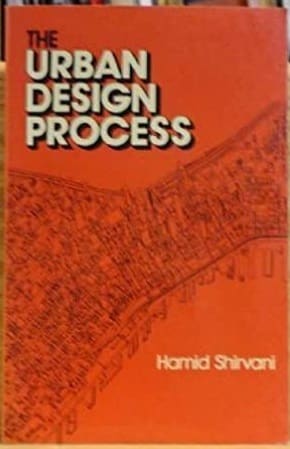
| Author | Hamid Shirvani |
| Publisher | Van Nostrand |
| language | English |
| Book Type | Paperback |
| ISBN-10 | 0442280335 |
| Pages | 214 |
the urban design process author background, Hamid Shirvani is recently a professor and chancellor in Pennsylvania State University. He spent his entire career in the education field and teaching in various locations in USA till he reached the highest level he holds now. Shirvani has served on numerous public and private boards and Commissions, these boards functions are mainly educational function and related to developing the higher education research and systems in the place of his work. He worked in professional development committees and sites. As it is clear from his work CV that he spent most of his career in the theoretical field but not in the professional work environment, it’s obvious also that there is no indication of direct participation in laboratory work in any of the fields of his specialty rather than the university and education environment. This provides the reader of full perspective of the author’s educational background and his relevant work experience as mostly it’s to developing the theory, and making it efficient in application in the real world urban design professional life.
In terms of who are the targeted audience of this book. As he indicates in his preface that urban design is a complex multidisciplinary field that encompasses architecture, landscape, urban planning, civil and transportation engineering, psychology, real estate development, and law. I would like to add to these fields the most important Geography. He admits that covering all these fields in one book is a very hard task and presenting a state of art volume too. The author in his book goes through the urban design process as he claims piece by piece, chopping the process into chapters and discussing the various elements of the process one by one. In order to understand the urban design process this book is a good source of having a full perspective of the overall structure of the field and further can build on it if required. The book can serve a wide range of specialties looking to get an understanding of what is urban design , what type of activities it comprise, and which disciplines are involved in the full process. To be specific, this book can serve more the related fields professionals in the beginning of their career.
Talking about the book theme. The book is centered on the American urban planning and architecture systems. As urban design comprise various appraisals, surveys, studies the author disclose the variety of paths to obtain data and human contribution to it; he summarizes concepts of the elements of the urban form in the city and its importance where the urban design is going to operate. Articulating the environmental change impact on the planning system and architecture practice and vice versa, in some areas discussion focus on the defects in the system and presenting ways to alter and change the system. The author presents several urban design methods in detail and the most used method in practice; as well highlights different types of design criteria for planners and designers use to analyze and assess development design and documentations such as regulations and guidelines. The detailed explanation of various concepts comes from architecture practice origin as it relates to architecture design. The author presents his book the urban design process in a different style than other books by dividing the urban design process into parts and presenting it in separate chapters; he does not illustrate the integration of each part and the cycling process from part to part only when examining and discussing the urban design methods. It is essential to read this book to take a full perspective of the urban design and planning in the western context and specifically USA as there are various similarities between the USA planning system and other systems in the world such as the Middle East.
What are the messages the author presented in his introduction about the book. Shivirani sends clear messages to the reader in his introduction; he indicates the main points of discussion in his journey throughout his book. It’s hard to present a comprehensive book on urban design within the changing context and development as he emphasizes on general concepts and methods in urban design. Urban design emerged as a separate discipline in late 1950s, but still existed earlier than this date. Urban design is part of the planning system; the name is presented differently depending on country context such as town planning…ETC. The author defines discrepancies and wrong and common error as considering urban design part of architecture. Urban design and planning system are part of a whole; he defines the major failures of the planning system and causes. Brief examples of the major concepts of urban design subject of further detail discussion and study in the following chapters, various building scales and relation to surrounding space, access for elderly in congested infrastructure and dense areas, development in suburban areas and environmental problems, and conducting research in preparation of all surveys and appraisals and research for documentation work within the urban design process.
Is this book aimed to be a text book or for the development of practitioners ? The author presents urban design process from three perspectives theoretical, research, major urban planning debate issues. The overall content of this book is targeted towards the education and research communities, some minor areas deal with the latest urban planning issues and providing resolutions for them. Though the author participated with major research academics for various urban design and environmental potential challenges to tackle, but the book lacks direct involvement with professional practice. The urban design process involves many engineering disciplines influencing the process and its outcomes. For example, transport modeling and planning affect the urban form created by the urban designers and directly influence their decision-making process within the urban design process. Accordingly, that was not covered in this book but highlighting the effect of infrastructure on the overall city urban form.
Regarding the overall ideas of the book and its coherency and connectivity. The structure of the book is designed by the author in different theme. As we may know that the urban design process is a sequence process and iterative in a various manner within every stage, but here he presented the urban design process differently. To start with, the first chapter is reserved for discussing the elements of the urban form, second chapter highlights the elements of the planning system and development regulations influence on urban design. The first activity in the process is the site appraisal where he discusses it in his third chapter and the impact of environmental challenges to the process. Urban designers follow a certain procedure in the development design preparation; here the author provides various methods in the fourth chapter and the evaluation procedure for the design process and the documentation work in the fifth chapter. Upon preparing the urban design for any development a development guidelines and program documentation is prepared this process is illustrated in the fifth chapter. A distinctive element of this book is the three chapters reserved for the implementation process in its several perspectives, administrative, legal, and financial. Shivirani ends his book of urban design prospects predicting future change.
For knowledge information to date relevance ; As he indicates in his introduction that in an ever changing context it’s hard to write a book that covers all aspects of urban design. The general theme and structure of the book in relation to the urban design process is still relevant, parts and areas of urban design process have changed and new knowledge is presented by urban design researchers and designers. Evaluation procedures changed as every firm conducting the urban design work in professional practice posses their own formulas. As for implementation, various frameworks are available nowadays in practice. The book presented its content underpinned by strong visual illustration ranging from diagrams, graphs, charts, 3d drawings, master plans, and flowcharts.
The author was very successful in reflecting the book content by selecting the proper book title; it is observed in its introduction and the chapter’s content and knowledge.
References reliability and creditability .In every chapter the author provides a flood of references reflecting the strong academic background and knowledge covering the major and minor elements of every chapter content. The book references are from academic area specialty and publications of the most well known publication companies. The references also are supported by public related publications such as government departments of planning, adding to those nonprofit organizations studies.
One might ask why I should read this book ? Geographers who are willing to understand the urban design process in its real design context, this is the right place to look for knowledge and information. Architects wants to obtain certain knowledge about the urban planning policy and program guidance writing as well as evaluation procedures here is the correct place to read. Urban designers willing to relocate to the American context to work or to conduct research and wants to understand the system and how all the system work in conjunction to other policy and legal procedures the book is the perfect book to read in the beginning. If a practitioner wants to go into detail about one of the elements of the urban design process he should read the relevant chapter here before proceeding to other references as the author have provided a wealth of references from different backgrounds. for further details about the efficient procedure to write a book review read my article click here .
- book review
[…] The urban design process […]
Leave a Reply Cancel reply
Your email address will not be published. Required fields are marked *
Save my name, email, and website in this browser for the next time I comment.

IMAGES
COMMENTS
This book review delves into the enormous field of urban and regional design in a way that is equally valuable to architects, design professionals, and city students. Paul is striving to create a synthesis of design across different fields, each of which is composed of smaller design spheres. It traces the history of urban architecture from its Mesopotamian origins to the present. It also ...
We looked at some of the best books for Best books for Urban Planning and design.
Essential Urban Design: A handbook for Architects, designers and planners. David Rudlin reviews Rob Cowan's new book that sets out to create, in words and distinctive hand drawings by himself and others, the definitive text on urban design. The inside front cover of this book includes 56 portraits of the key figures in the development of ...
The article is a review of the Image of the City by Kevin Lynch, discussing the elements of imageability and legibility with respect to mental mapping.
ISBN: 9780470515266 Urban Design Since 1945: A Global Perspective is a recent and ambitious addition to the burgeoning literature on urban design. The author, David Grahame Shane, is a proliic theorist and professor who has taught at Columbia University, University College London and Politecnico de Milan. The book recounts the narrative of a ...
The book is built in an extreme hierarchy from the preface to the last chapter. As he indicates in a paragraph who should read this book it's for every one interested in urban design. The book structure is merely a story of a city that is hit by a hurricane, in some areas of the book, he introduces examples of facing climate change. The book provides in general the method of urban design ...
Urban Design for an Urban Century is rich in content and examples, this book is a great reference for anyone looking for a a comprehensive overview and introduction to of the field of urban design.
The book, New Companion to Urban Design, provides some valuable answers. Indeed, the New Companion is a monumental and path-breaking tome in an increasingly welcome and crowded field of urban design readers and companions. The breadth and scope of the issues it covers, at 50 chapters and 714 pages, is a breathtakingly impressive achievement.
Each urban project invariably throws up a new set of problems and strategic decisions for the design team. This guide distils the essential information required for the expert direction of the day-to-day work of urban design, from strategic design to masterplanning through to character assessment and collaboration.
This review explores the book's comprehensive approach, noting its efforts to combine theoretical frameworks with methodological insights and its inclusion of a wide range of topics while highlighting the book's strengths in addressing current issues in urban design research.
Davison G, Woodcock I (2024) Researching place in urban design. In: Kamalipour H, Aelbrecht P, Peimani N (eds) The Routledge Handbook of Urban Design Research Methods. New York, NY: Routledge, pp.252-260. Google Scholar. Douglas GCC (2024) Researching by the seat of your pants: The bicycle, the camera and the sequential case study method in ...
The main body of research in this paper will then focus on the origins of each of the principles of contemporary urban design theory. This paper will aim to conclude with what where the social, environmental, economic and political catalysts for the origins of the principles of contemporary urban design theory. Download Free PDF.
Here are 15 books on urban design and planning from our contributors. We'll be giving away copies of one of these books in a drawing opening this Wednesday, October 8. Be sure to check back!
The broad range of design issues presented in the three chapters on the city encompass interior design, alternative architecture for an ecologically-driven, socially-engaged Istanbul, as well as more conventional urban design guides for urban planning and design, urban spaces and their components, related to policy and participation.
Our community of authors, experts, and super readers pick their favoriteurban design books. Are you ready to explore books in a new way?
Public Places Urban Spaces provides a comprehensive overview of the principles, theory and practices of urban design for those new to the subject and for those requiring a clear and systematic guide. In this new edition the book has been extensively revised and restructured. Carmona advances the idea of urban design as a continuous process of shaping places, fashioned in turn by shifting ...
The best spring 2023 design books include 'Paved Paradise' by Henry Grabar, 'The Ugly History of Beautiful things' by Katy Kelleher, 'Milton Glaser: Pop,' Jens Quistgaard by Stig ...
This book is a journey through urban projects around the world aiming to offer new intellectual approaches to urbanism as well as a fresh look at its latest physical manifestations. Design approaches in cities including Buenos Aires, Reykjavik, Hamburg, Bogotá, Beijing, Caracas, Seoul, Ubuntu, and Evora are presented through specific urban projects analyzed by a theoretical yet pragmatic ...
Simple book review of the favorite Urban Design's references. Urban Design Process written by Hamid Shirvani & Image of the city written by Kevin Lynch.
Book Review: The Concise Townscape by Gordon Cullen. In the realm of urban design and architecture, few works have achieved the status of a true masterpiece. One such exceptional contribution is "The Concise Townscape" by Gordon Cullen. This influential book has made an indelible mark on the field, captivating professionals and enthusiasts ...
Urban Design: A Typology of Procedures and Products, 2nd Edition provides a comprehensive and accessible introduction to urban design, defining the field and addressing the controversies and goals of urban design. Including over 50 updated international case studies, this new edition presents a three-dimensional model with which to categorize ...
Essential Urban Design: A Handbook for Architects, Designers and Planners. Paperback - Day to Day Calendar, June 4, 2021. Shaping our cities, streets and public spaces, urban design informs the places we live. It is a complex multi-disciplinary process, requiring the input of a wide variety of stakeholders and design and construction ...
The urban design process is a must read book for students and professionals in the early career, rich in knowledge, references, and professional practice issues